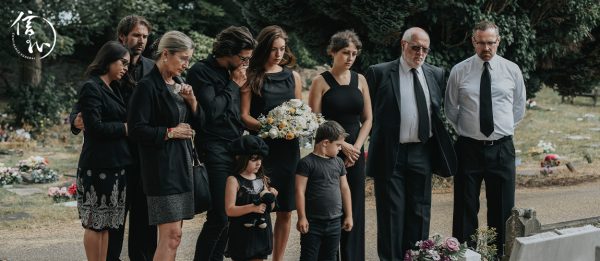
Buddhism is one of the most popular religions in Singapore, with about a third of the population practising this faith. And the religion’s teachings extend beyond its practices in daily lives; it also extends to the funeral service when the practitioner passes away.
If you have been invited to attend a Buddhist funeral service but remain unaware of its customs and rituals, it is advisable for you to educate yourself on the subject to ensure you pay your proper respect to the departed. Read on to learn more as we explore the various customs of a Buddhist funeral in Singapore.
The concept of reincarnation in Buddhism
The concept of reincarnation is a significant tenet of Buddhism. And this belief informs the vast majority of the customs and rites in a Buddhist funeral. It is believed the rituals carried out by the priest during the funeral help ensure a smooth transition into the afterlife for the departed soul.
Even though Buddhists understand that death is merely a transition from one life to another, a funeral service still offers the bereaved family a chance to express their grief and display a final act of love and filial piety as they say goodbye to their loved ones.
Buddhist funeral rites and customs

While Buddhist funeral rites in Singapore can vary between different traditions and schools, the wake is generally held at a funeral parlour or the void deck of the departed’s home. During the duration of the funeral, friends and relatives gather to pay their respect and express their condolences to the family.
The funeral service typically features a portrait of the departed – placed prominently nearby – which serves as the altar’s centrepiece. The altar will generally be surrounded by various offerings, such as incense, flowers, and fruits.
It is also a common sight to see family members gather around to chant the Buddhist sutra during the wake. The belief is that the chanting will help cleanse their loved one’s past karma, allowing the departed to gain enlightenment.
In fact, chanting is an essential aspect of a Buddhist funeral service. Beyond the chanting of the Sutra, the attending Buddhist monk will conduct various sermons during the funeral and lead the chanting of various Buddhist scriptures. These rituals are typically conducted on the first day, last night, and the day of the funeral procession.
Buddhist funeral etiquette to follow

It is advisable to avoid the colour red when attending a Buddhist funeral service. This is because red is widely considered a colour of celebration in Chinese culture. You should also refrain from wearing flashy colours and accessories – like jewellery pieces – and opt for plain clothing in solemn colours instead.
When you are approaching the casket to pay your respect to the departed, you can choose to bow or pause reverently for a moment of silence in front of the altar. While there is no restriction on how many joss sticks to light, the usual custom is to light a single joss stick.
It is also common for guests to offer a contribution – known as pek kim (帛金) – to the bereaved family to assist them with the funeral costs. There will usually be a reception table set up for this express purpose, with a book for you to write your name and the amount contributed. This gesture is voluntary, and there is no fixed amount to donate.
Additionally, guests are invited to join in the prayers and meditation scheduled throughout the duration of the wake. If you are unsure of what to do, simply follow the lead of the priest. However, if you feel uncomfortable joining the chanting, you can politely excuse yourself and sit silently in a corner.
Final resting place
After the wake has ended, the casket will be sealed and lifted onto a hearse. Friends and family will form a procession behind the hearse to pay their last respect to the departed before the body is transported to its final resting place.
If the family opts for cremation, the deceased will be transported to a crematorium. After the body is cremated, the remains can be scattered at sea or enshrined in a government or temple columbarium. Conversely, if the family decides on a burial, the Buddhist monk will be present at the burial site to lead the chanting as the body is gently lowered to the ground.
It is essential for guests to observe the proper etiquette when attending a Buddhist funeral. By dressing appropriately and following the funeral customs and rites, you are demonstrating your respect to the departed and the bereaved family.
At Confidence Funeral Services, our funeral directors possess years of experience handling funerals of different faiths. If you are unsure of how to arrange a Buddhist funeral, do not hesitate to reach out to us for assistance.


